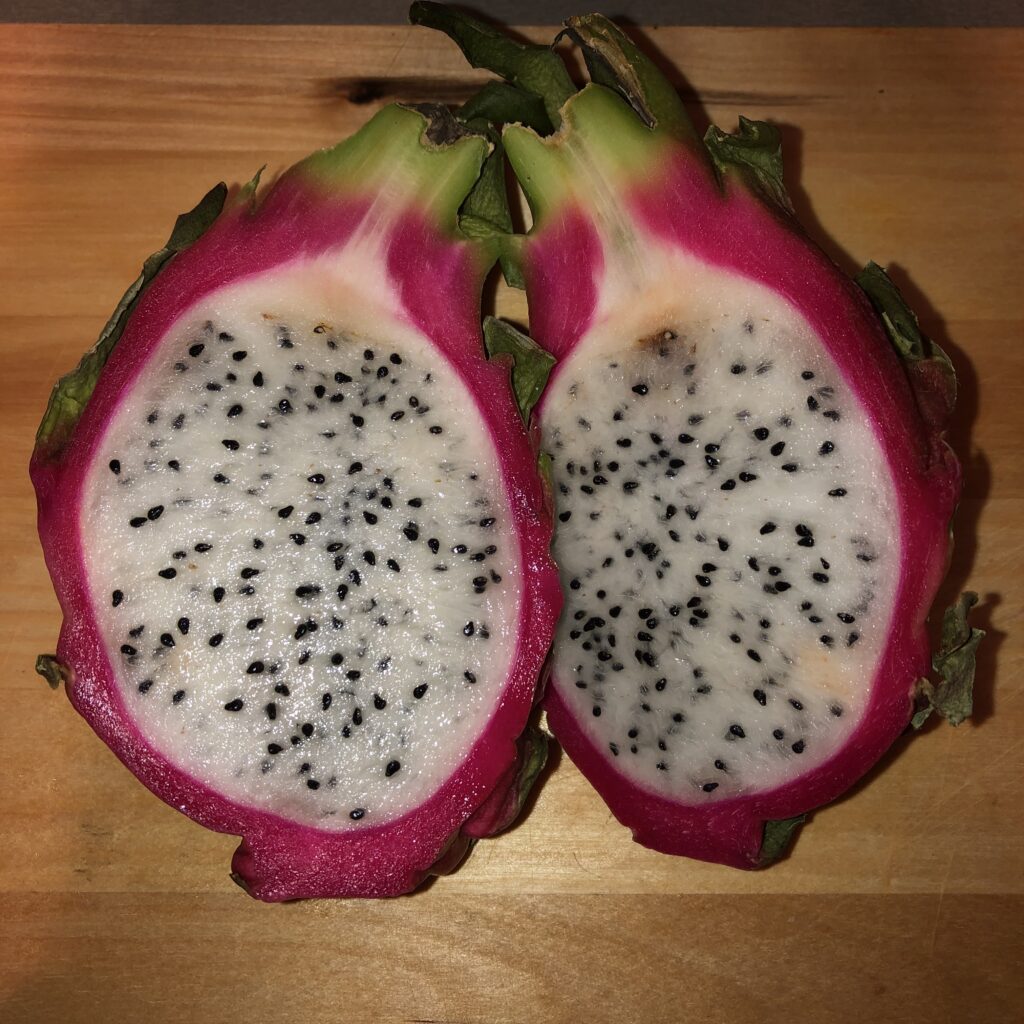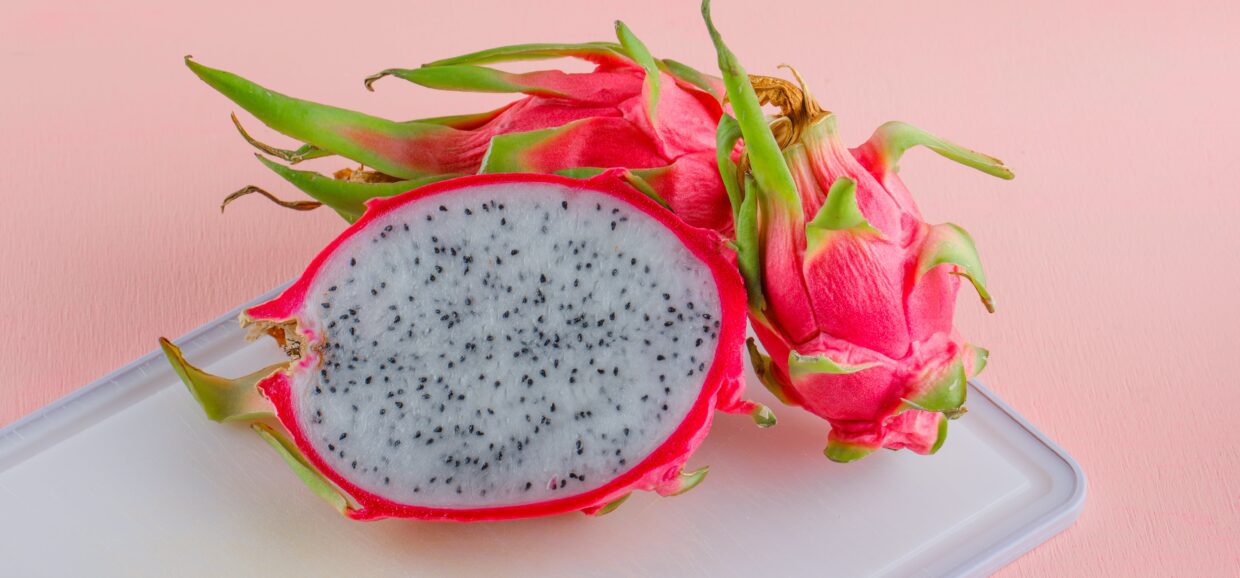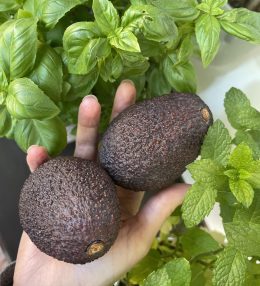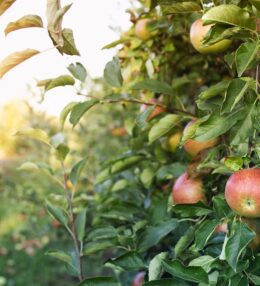Interesantais citrusaugs pūķa auglis jeb pitaja ir tropu auglis, kas pēdējos gados ir kļuvis arvien populārāks. Interesantais citrusaugs. Lai gan cilvēki to galvenokārt izbauda unikālā izskata un garšas dēļ, pētījumi liecina, ka tas var dot labumu arī veselībai.
Vai arī tu veikalos esi mēģinājis augli, tikai tāpēc, ka tas ir interesanta izskata – kā Pitaja?
Šajā rakstā aplūkosim, kas ir pūķa auglis, tostarp to uzturu, ieguvumus un kā to ēst.
Kāda ir atšķirība starp “Dragon fruit” (pūķa augli) un “Pitaya” (pitaju) ?
Sāksim ar to, ka pūķa auglis jeb pitaja, ir viens un tas pats. Citreiz tie pēc izskata ir citādāki, tāpēc var rasties jautājums, vai šis auglis ir viens un tas pats. Taču ir pavisam vienkāršs izskaidrojums, kāpēc šim auglim ir divi nosaukumi.
Nosaukums “pitaya” vai “pitahaya” ir Latīņamerikas vārdi. Tā dzimtene ir Centrālamerika (datēta ar 13. gs). Vēlāk, šis auglis izplatījās Vjetnamā. Vjetnamiešu nosaukums “thang loy”, tiek tulkots uz angļu valodu “dragon fruit”. Izraēlā, kur augļi tiek komerciāli audzēti un tiek importēti ASV, audzētāji labprāt tos dēvē par “pitaya” vai “pitahaya”, savukārt vjetnamiešu audzētāji apzīmē šo augli ar vārdiem “pūķa auglis”.
Nu un latviešu valodā, mēs izmantojam citreiz pitaja vai pūķa auglis, no šiem iepriekš minētajiem vārdu tulkojumiem.
Tātad, neatkarīgi no tā, vai to sauc par pitaja, pitahaya vai pūķa augli, tas ir viens un tas pats auglis.
Cerams, pēc šī raksta, dosies uz veikalu nobaudīt to! Labu apetīti!
Interesantais citrusaugs pūķa auglis jeb pitaja
Tas ir skaists un eksotisks auglis, kuriem ir daudz ieguvumi veselībai. Lieliski piemērots ādai, sirds un asinsvadu sistēmām, zemākam holesterīna līmenim, zemākam cukura līmenim asinīs, palīdzot ar kuņģa slimībām un palīdzot kontrolēt svaru.
Pūķa augļiem ir sarkana vai dzeltena miza ar purpursarkanu vai baltu iekšpusi, bet vienmēr ir pārklājumu lapu sākums, līdzīgs artišokam. Pēc garšas ir maigi ass un saldens, dažreiz skābs. Tas nedaudz atgādina, čia sēklas vai kivi.
Fakti par pitaju
- Tas aug uz kaktusa, kas zied vienu nakti vienā augļu ciklā.
- Pitajas apputeksnēšanu veic nakts radības, piemēram, kodes un sikspārņi.
- Pitajas vislabāk garšo, ja tās ēd atdzesētus – sasalušus.
- Kombinējot pitaju ar gurķu sulu un medu, varot izveidot alu, kas varot nomierināt ādu.
- Pitajas ziedu pumpuri ir ēdami.
- Pūķa augļi ir tropu augļi, kuru dzimtene ir Meksika un Centrālamerika. Garša ir kā kivi un bumbieru kombinācija.
- Ir pitajas šķirnes, kas atšķiras pēc krāsām.
Interesantais citrusaugs pūķa auglis jeb pitaja uzturvērtības
- Auglī ir 53 kalorijas uz 100 g, un tas ir bagāts ar antioksidantiem.
- Pitajas sēklas satur olbaltumvielas, kā arī omega 3 un 6 taukskābes.
- Tas ir bagāts ar olbaltumvielām, šķiedrvielām, likopēnu un ogļhidrātiem.
- Pārāk daudz sarkanās pitajas ēšana var izraisīt pseidohematūriju, kas var padarīt urīnu sarkanīgu.
- Sarkanās krāsā pitajā, satur likopēnu, to pašu antioksidantu, kas atrodams tomātos.
- C vitamīns, kas palīdz uzlabot imunitāti.
- Dzelzs, kas atrodas pitajā, lieliski palīdz paaugstināt hemoglobīna līmeni cilvēkiem ar anēmiju. Tas arī palīdz sarkano asins šūnu (RBC) ražošanā, kas pēc tam palīdz pienācīgi nodrošināt svarīgu orgānu skābekli.
- Ar antioksidantiem bagātā pitaja palīdz detoksikācijā, izskalojot metālu atkritumus un toksīnus no ķermeņa.
- Regulāra pitajas lietošana ir saistīta ar cukura līmeņa pazemināšanās asinīs, kas ir lieliski piemērots cilvēkiem, kuri cieš no 2. tipa cukura diabēta..
- Augsts kalcija saturs pitajā uztur kaulus veselīgus un uzlabo kaulu minerālu blīvumu.
- Pitaja ir labs grūtniecēm, jo tas ir bagāti ar dzelzi, B vitamīniem un Folātiem.

Interesantais citrusaugs pūķa auglis jeb pitaja kā to izvēlēties veikalā?
Lai izvēlētos nogatavojušos pitaju, meklē spilgtu, vienmērīgu krāsu. Turi pitaju plaukstā un mēģi nedaudz saspiest mizu ar īkšķi vai pirkstiem, tam nevajadzētu būt pārāk mīkstai vai mīkstai. Ja tas ir ļoti stingrs, tam vajadzēs nogatavoties dažas dienas.
Pitajas uzglabāšana
Negrieziet pitaju, kamēr neesi gatavs tos ēst. Kad tas ir sagriezts, tas jātur cieši noslēgtā traukā. Šis auglis var uzņemt citu ēdienu garšu un smaržu, tāpēc aizsardzība ir nepieciešama. Tas var palikt svaigs dienu, iespējams, nedaudz ilgāk, atkarībā no tā, cik tas ir nogatavojies. Kad mīkstums sāk kļūt brūns un kļūst mīksts, ir pienācis laiks to mest ārā.
Lai to uzglabātu ilgāk, ievietojiet augļus noslēgtā traukā un uzglabājiet tos ledusskapī.
Kā vieglāk sagriezt pitaju?
Pārgriez pitaju uz pusēm tāpat kā jebkuru citu augli. Un izņem āra mīkstumu, kā kivi vai avokado.
Baudi šo interesanti augli tādu, kāds tas ir, vai pievieno klāt to kādam ēdienam: salātiem, augļu salsai, smūtijam, sulai vai kokteiļiem.
Lasi vēl citus interesantus rakstus par augļiem un netikai ŠEIT









